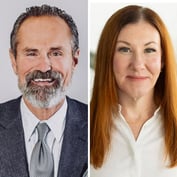What You Need to Know
- Despite the growth of the RIA industry, many of the emerging firms seem remarkably similar.
- To achieve growth, firms need to explore new business lines and revenue streams and listen to what prospects need that is not currently offered.
- RIAs must also be ready to enter new phases of business to step up their growth model.
RIAs represent the fastest-growing category in the U.S. wealth management market since 2016, according to McKinsey and Company. More than 1,600 advisors are joining the RIA industry annually, while 700 independent RIA firms are started each year.
Surprisingly, despite all this growth, many of the emerging firms seem remarkably similar, and their differences are difficult to discern. It’s not easy to create something new and truly different, but based on my own experience, I know it can be done.
Ten years ago, I set out with a group of highly experienced like-minded financial services pros to create a “partnership” where all of us felt involved — leadership, management, advisors and support.
We were all deeply committed and collectively made professional and personal sacrifices to make our vision a reality. We established a positive culture where everyone is a partner and knows their voices are heard. This has allowed us to be in this boat together and row collectively in the same direction.
Grow Without Losing Money
As growth is a necessary part of success, so is the ability to carve out responsibility and empower local leaders to grow their respective markets and/or departments. With everyone vested in the success of the partnership, growth strategies and ethical standards become embedded in the overall plan.
It also becomes apparent that “what brought you here may not always take you there.” You will need to explore new business lines and revenue streams and listen to what your prospects need that you may not be currently offering.
It is also crucial to monitor the risk the partnership may be taking in the name of growth. New or additional risk must never interfere with the successful foundation you have built.
It also cannot be emphasized enough that your P&L must always be managed carefully and aligned with your growth plan.
All too often, firms, companies and partnerships are growing so fast that they feel “losses” are necessary for these levels to be maintained. If you have people who are all driving toward the same goal and have different areas of focus, then you will be able to limit the loss side of this equation.









 June 22, 2023 at 09:59 AM
June 22, 2023 at 09:59 AM










